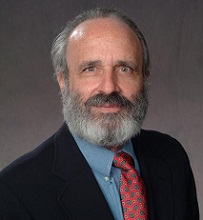 William A. Hyman
William A. Hyman
Professor Emeritus, Biomedical Engineering
Texas A&M University, w-hyman@tamu.edu
Read other articles by this author
There has been much discussion of the technology aspects of physician/patient electronic communications. There has likewise been frequent mention of the possible value of increased patient engagement and how this value can be captured and enhanced. What has received less attention is the demands on providers that active patient engagement entails, especially when it involves open two-way e-communication. While the telephone has offered a means of such communication its use has been largely limited to short follow ups rather than providing an ongoing dialogue. In this regard e-mailing, texting, and their cousins have altered the way people communicate in general and established expectations of immediacy that can be challenging to meet.
The basic questions are how many patients will a provider be communicating with on any given day, how much time will this take, when will it occur, and how will the quality of the information exchange be assured? In addressing these questions, we can recognize that some patients will require (or expect) very little communication, others a moderate amount, and some an ongoing and more-or-less continuous dialog. The latter group even if small in numbers will absorb a disproportionate amount of the providers time, and the degree of communication may exceed medical value. This raises the question of how a provider can limit such communications once the system has been established. A related question is what kinds of issues can or should be handled electronically. A brief follow-up to an office visit is quite different from a contact on a new issue. Presumably not much external communication will occur during the business day unless a practice can be organized to provide dedicated communication time. If there were dedicated time then the number of patients being seen live in a busy practice would have to decrease, or the day extended, unless there is a sudden burst of increased productivity. If patient communication is an after-hours activity then the provider will now be devoting evenings and perhaps weekends to reviewing and responding to patient communications, and reviewing records as necessary to provide appropriate responses. This will be after they get their EHR data entry work done. And the electronic communication itself will have to be captured in the EHR unless this occurs automatically.
A related question is what is a reasonable expectation for turnaround time, and does this vary with time of day, day of week, being out of town, etc.? Short turn around times of course increase the burden on the provider in terms of availability and total time per day. It should also be recognized that back-and-forth communication has different attributes when there is rapid turnaround as opposed to delays between messages. In the latter case records might have to be reviewed multiple times in order for the provider to recall patient specifics. Another question is whether providers can or should be paid for e-communication time. This question has been a basic one for telemedicine, of which e-communications is a part. The significance of this question will also vary with the nature of the interaction, and the patient’s probable expectations that such communications should be free, unless they have been educated to the contrary. Free might save the patient time and money, while also reducing income to the provider. E-communication also has socio-economic implications in terms of patient access, experience and training, and if there is an economic component, the ability to pay.
Medico-legal issues of e-communications have also been raised. Two aspects of this are the initial determination of what should be handled electronically and the potential consequences of the resulting written record from messaging interactions. There are of course also HIPAA and related privacy issues including the security of the communication and patient identification. Documented informed consent and confirmation of receipt in both directions is also an issue.
Finally, there is the question of whether or not e-communication actually has positive medical benefits. It is easy to assert that it does, and perhaps offer a real or hypothetical anecdote, but it is harder to acquire proof that this is actually the case on a broader basis.
